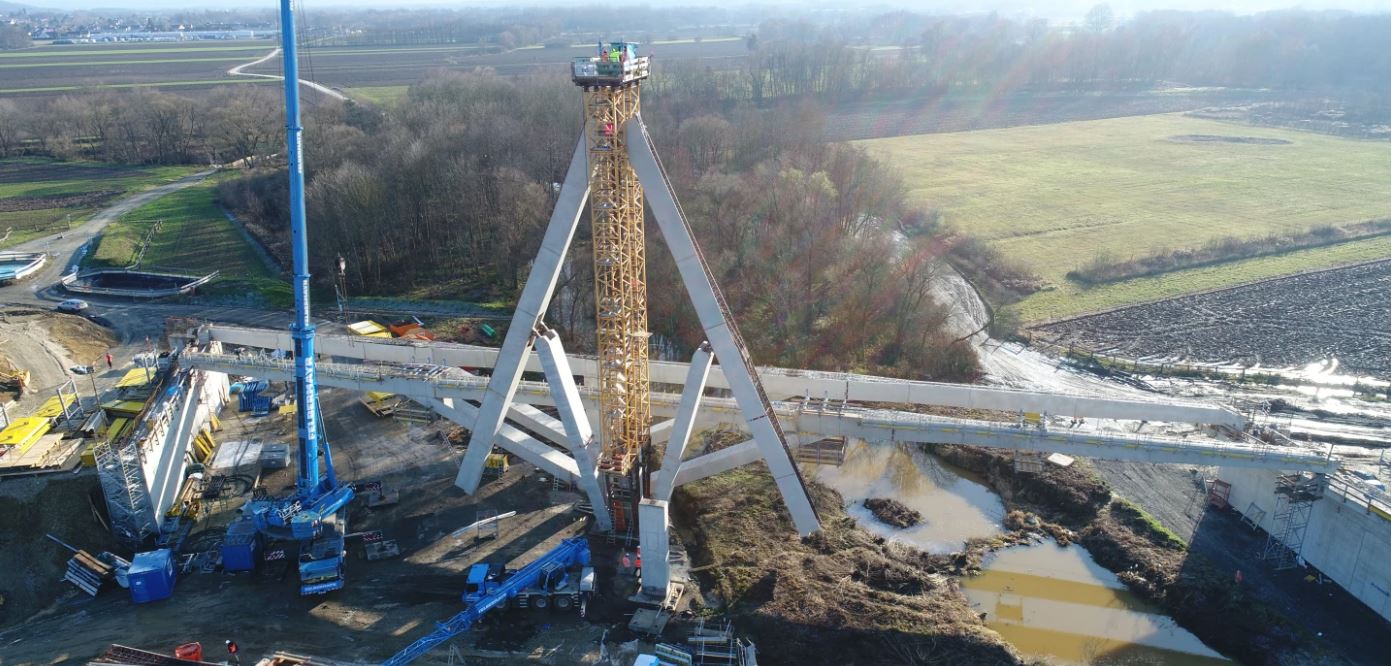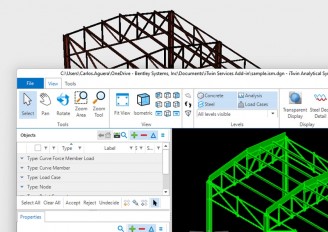
A new bridge construction method, which was introduced by structural engineers at the Vienna University of Technology in 2006, was applied on a bridge in Austria. The innovative concept of the method resembles a “closed” umbrella, which unfolds, achieving the final form of the bridge. The method is considered to be very cost-effective in terms of material usage.
There are two variants of the new prototype construction method, the balanced lift method and the balanced lowering method. The choice depends on the height of the piers of the bridge in relation to the length of its spans. The first one is used for bridges with high piers while the second one is used for bridges with piers of moderate height.

The two variants of the new bridge construction method (Credits: bridgeweb)
The first application of the new method took place in a 100 meter long bridge crossing the Lahnbach in a time period between October 2019 and January 2020, while the second one was at the new 116 meter long bridge standing over the Lafnitz River in south Austria. Both bridges are part of the new S7 highway, a project under construction at the time. Initially, balanced cantilever method or incremental launching method had been considered for the construction of bridges, but the new balanced lift construction method qualified as its cost was estimated 30% lower than the other methods.
Thin-walled U-shaped prefabricated concrete hollowed elements were used for the construction of the bridge’s girders in order to be lightweight for the lifting procedure. The girders were constructed in a vertical position, using a taller auxiliary pillar as a guiding rail, as the height of the piers was short (8 meters). Each girder was 36 meters long and weighted 54 tones. The two girders were connected to each other with four tendons and linked with the pier with a vertical compression strut, located around mid-girder, which moved during the construction procedure. Hydraulic jacks were moving the compression struts while two lowering cables, running though the girders, remained in tension, resulting in the unfolding of the two bridge’s girders and the support struts like an umbrella, until the two bridge’s girders reach their final horizontal position. The gaps between the girders and the abutments were filled with suspended girders. Once the hollow girders reach their final horizontal position, they were filled with concrete to complete the structural components of the bridge achieving a monolithic structure.

The bridge’s girders in their final position (Credits: newatlas)
The new bridge construction method provides the capability to achieve possible intended elevation of the bridge’s girders. An elevation of 0.6%, which was required for the span at the Lafnitz Bridge was achieved through two adjustment screws located at either side of the pier.
Construction of bridges with tall piers in relation to the bridges’ spans, via this method, is very profitable as there is no need to construct an auxiliary structure on top of the pier.
The new bridge construction method is considered to be more suitable for bridges with high piers, span lengths between 50 and 250 meters and at locations where extensive scaffolding and formwork are a deterrent.
Sources: Bridge web, Popular mechanics
Media
- The new bridge construction method
- TU Wien
Want to read more like this story?

New technique to erect a bridge applied in Austria
Feb, 27, 2020 | NewsA new technique to erect a bridge was applied for the first time in Austria. The new method, known...

Types of bridges
Jun, 01, 2023 | EducationArch Bridge An arch bridge is a type of bridge that uses a curved, semi-circular structure, kno...

The most famous bridges of the world
Aug, 26, 2015 | NewsThere are so many bridges in the world in different styles, like old stone bridges or steely, footbr...

An engineering point of view for the Tacoma Narrows Bridge collapse
Apr, 04, 2023 | EducationIntroduction An iconic civil structure is a bridge. The desire for humans to go from place to...

World's most frightening bridges to cross: Part 1
Mar, 20, 2020 | NewsBridges are structures that enable crossings over physical barriers including rivers, valleys and c...

Video: Milton-Madison Bridge Truss Slide
Apr, 15, 2014 | NewsThe Milton-Madison Bridge spanning the Ohio River and connecting Milton, Kentucky and Madison, India...

Vermont Interstate Project to Use Lateral Slide Construction
May, 27, 2014 | NewsConstruction is about to begin on the first project in Vermont to use lateral slide construction. Th...

Historic Oregon Bridge For Sale
Aug, 15, 2014 | NewsIf anyone is in the market for purchasing an old bridge here is your chance. Multnomah county i...

Croatia to construct a new bridge from the mainland to Krk Island
Mar, 07, 2024 | NewsIn order to manage the traffic congestion on the aging (opened on July 19, 1980) Tito Bridge, a new...
Trending

Spectacular interchanges around the world

New Release - STAAD.Pro 2024 - 2

ADINA 2025 for Structural WorkSuite

ADINA 2025 New Release!

Concrete Buildings as Rechargeable Batteries

Powerful earthquake shakes central Philippines, dozens killed


